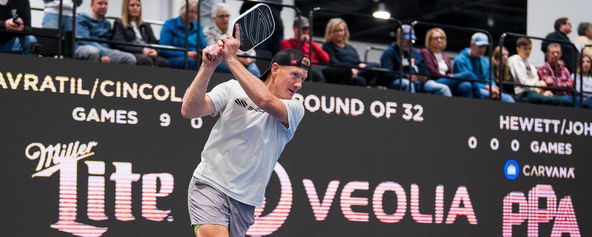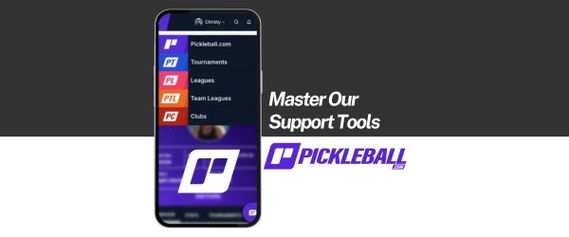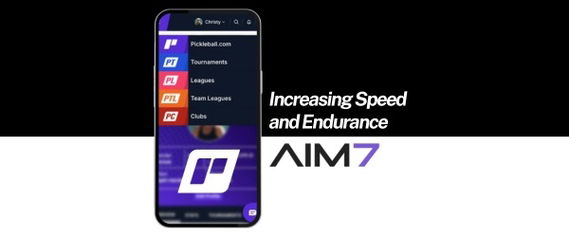
How do I hit a two-handed backhand? Zane Navratil shares key tips
A “twoey” is short for a two-handed backhand in pickleball.
But why is it superior to one-handed backhand?
According to pro Zane Navratil, “every pro pickleball player, whether they’re male or female, is using a two-handed backhand at some time in their game.”
Navratil recently explored the all-important shot on his YouTube channel.
Why use a two-handed backhand?
Using two hands on your backhand shot can make a world of difference in terms of force.
“Adding the second hand on our paddle helps us generate a little bit more pop,” demonstrated Navratil.
When a ball is higher up, using that second hand also adds stability.
“Another advantage when using a two-handed backhand is our contact point. Our contact point on a two-handed backhand is a little bit closer to our body. When I’m hitting a one-hander, I generally need to keep that ball out in front of me. But when I’m using a two-hander, my contact point comes back closer to my body. When we’re dinking, that gives us a little bit of extra time,” said Navratil.
ADVERTISEMENT
There are even more benefits, of course.
“It also gives you a really good deception ability. This left hand is super important for making last-minute adjustments to your paddle angle, which can really deceive your opponents,” he continued. “The beauty of a two-handed backhand dink is you don’t know whether I’m going to just hit another dink or I’m going to hit a speed up. And with this left hand I can control exactly the location that I’m going just with a last-minute change of angle.”
How to hit a two-handed backhand
For right-handed players, Navratil recommends starting off with a continental grip. Then, add your left hand by placing it above your right as close to the other fingers.
“The most important part is going to be our preparation. Back at the baseline, I’m going to close my stance and really try and focus on getting rotational power. I’m not taking a big swing with my arms, but rather I’m rotating with my core,” he explained. “Our contact point is going to be out in front near our front leg, and we want to transfer our weight through the shot.”
At the kitchen line, you might not be able to move your feet into position as well, but the same principles apply - rotate through the core and transfer your weight.
Narvatil demonstrated a unique drill to get some practice for how to hit a two-handed backhand.
Navratil’s two-handed backhand drill
Start with your paddle in your dominant hand. Place your non-dominant hand on your paddle as if you’re about to hit a two-handed backhand.
Then, remove your dominant hand from the paddle. Now, your paddle is completely in your non-dominant hand and you dink across the court using your non-dominant hand.
“Keep your dominant hand moving with your non-dominant hand because they would be flowing together - but keep your dominant hand nearby, but off the paddle,” he said.
You can dink straight ahead, cross-court, or work on any of the different pickleball shots to get accustomed to this feeling.
When to hit a two-handed backhand
A two-handed backhand is useful for:
- Drives from the baseline
- Top spin drops from the baseline
- In hands battles, a two-handed backhand adds extra stability
- Aggressive dinks and speed ups
- Countering at the transition zone
“You can use that extra power that you get from two hands in the transition zone to punish bad attacks,” explained Navratil. “Two-handed backhands are also great for aggressive dinks and speed ups. If your dink and your speed ups look exactly the same, you’re going to fool a lot of people with those attacks.”
So, let’s hit the court and strengthen our two-handed backhand shots.
Time to get drilling!
Want more pickleball tips and tricks? Follow us on Instagram and X (formerly Twitter) for all things pickleball.
Related articles

Five game-changing tips to elevate your pickleball skills
Learn from one of the best coaching minds in the business, John Cincola.
16 hours ago
-Victoria Radnothy
.jpg?width=592&height=237&optimizer=image)
Post-Pickleball Cooldown Routines: Science Proven Methods
2 days ago
-Guest Author

Mastering Our Support Tools
2 days ago
-Tyrece Warner

Pickleball Conditioning: Proven Exercises to Increase Speed and Boost Endurance
2 days ago
-Guest Author





